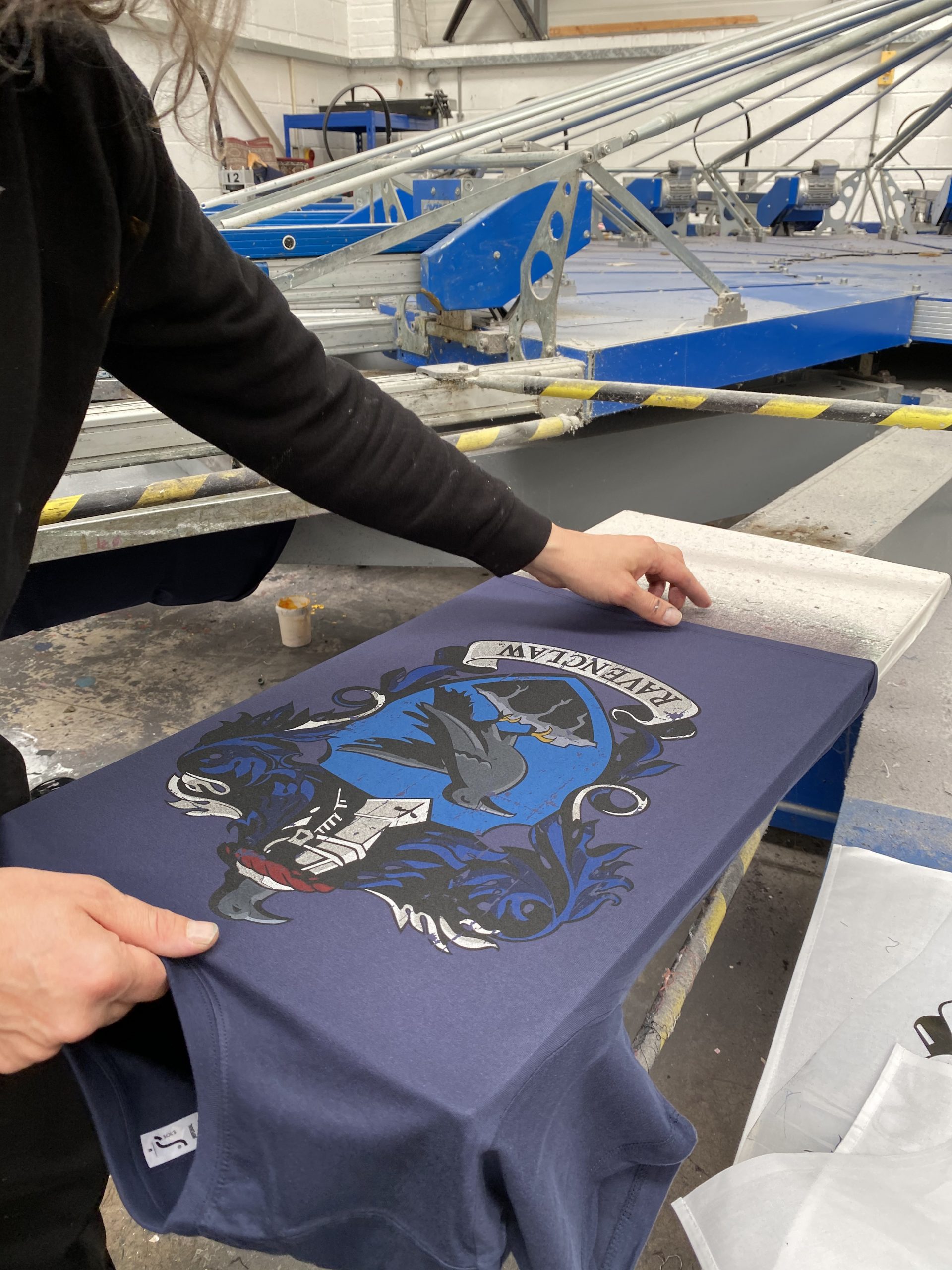ChatGPT said: How 10:9 Design Screen Printing can elevate your brand
The Important Overview to Comprehending Screen Printing and Its Versatile Uses
Screen printing has a rich history that goes back to ancient times, advancing right into an advanced method used throughout different markets today. This guide checks out the intricacies of the screen printing procedure, describing its applications in advertising and marketing, home, and style style - 10:9 Design Texas. Understanding these basics can open creative possibility for both commercial and creative projects. The following areas will certainly expose crucial pointers and strategies to enhance one's screen printing ventures
The Background of Screen Printing
Screen printing has origins that trace back centuries, its evolution shows the creative and technological improvements of numerous societies. Coming from ancient China, the technique was originally utilized for decorating fabrics and later infect Japan, where it came to be essential to Ukiyo-e woodblock printing. The approach moved to Europe in the 18th century, where it gained appeal amongst craftsmens and business printers. The innovation of image emulsion in the 20th century reinvented screen printing, enabling even more intricate styles and better efficiency. Artists like Andy Warhol additionally pushed its appeal, using the medium to create famous works that combined commercialism and fine art. By the late 20th century, screen printing had actually established itself as a versatile method, utilized in vogue, marketing, and art. Today, it remains to evolve, integrating digital technology and expanding its applications throughout different sectors.
The Screen Printing Refine Explained
Screen printing transforms imaginative visions right into tangible designs with a collection of precise actions. An image is developed and after that moved onto a screen, typically made of fine mesh fabric stretched over a frame. A light-sensitive emulsion is put on the screen, which is revealed to light, setting in locations not covered by the photo. After cleaning out the unhardened solution, a pattern is developed.
Next off, the screen is positioned over the substratum, whether it be material, paper, or an additional material. Ink is after that pushed via the open locations of the stencil using a squeegee, depositing the style onto the substrate listed below. This process can be repeated for multiple colors, needing separate screens for each and every shade. Lastly, the printed item is cured using warmth to guarantee the ink adheres effectively, leading to a resilient, vivid layout prepared for usage.
Sorts Of Screen Printing Techniques

Furthermore, specialized methods, such as discharge screen printing, eliminate color from the material to create softer prints, while foil screen printing uses metal aluminum foil to achieve a shiny surface (10:9 Design Texas). Each strategy provides unique qualities, satisfying various imaginative needs and manufacturing ranges, inevitably increasing the opportunities within the screen printing domain name
Applications of Screen Printing in Numerous Industries

Additionally, the signage and advertising and marketing fields make use of screen printing for creating captivating displays and banners. This technique allows for bold colors and detailed layouts that catch interest. In electronic devices, screen printing is employed for using conductive inks to motherboard, essential for element connections. Additionally, the home decoration market embraces screen printing to generate distinctive designs on fabrics and wall surface art. Generally, screen printing works as an important tool across varied fields, boosting items with individualized and aesthetically enticing graphics.
Tips for Successful Screen Printing Projects
While carrying out a screen printing job, careful focus to information can significantly enhance the last result. Selecting high-quality products is essential; this includes the screen, inks, and substratums. Making use of proper mesh matters can affect ink deposition and detail resolution. read more Prep work is equally essential; thorough cleansing of screens and appropriate exposure times assure crisp prints.
Next, accurate enrollment is essential for multi-color prints. Utilizing placement tools can help achieve accurate layering. Additionally, testing prints on scrap materials before production assists identify prospective concerns without wasting sources.

Often Asked Inquiries
What Products Are Finest for Screen Printing on Textile?
Cotton and polyester blends are ideal for screen printing on textile because of their longevity and ink absorption. Additionally, specialty materials like silk or canvas can create special textures and finishes, enhancing the overall style top quality.
Exactly how Do I Clean and Maintain Screen Printing Equipment?
To clean and keep screen printing equipment, one must regularly clean screens with ideal solvents, evaluate mops for wear, lubricate moving parts, and shop all products in a dry, dust-free setting to lengthen their life expectancy.
What Are the Environmental Influences of Screen Printing?
Screen printing can have substantial ecological effects, consisting of chemical waste from solvents and inks, water use throughout cleansing processes, and energy usage. Green materials and sustainable techniques are important for reducing these unfavorable effects.
Can Screen Printing Be Done in the house Successfully?
Screen printing can be effectively done at home with the right materials and techniques. Hobbyists can produce high quality prints, though success relies on their skill level, equipment, and understanding of the procedure included.
What Are the Prices Connected With Beginning a Screen Printing Service?

Beginning a screen printing company entails costs for devices, materials, and workspace. Initial expenses usually vary from a couple of hundred to a number of thousand dollars, relying on the scale, quality of machinery, and desired production ability.
Screen printing has an abundant history that dates back to old times, developing into an advanced method utilized throughout different industries today. Another strategy, rotating screen printing, uses cylindrical displays, facilitating constant printing on fabric rolls, thus enhancing performance for massive manufacturings. In addition, specialized strategies, such as discharge screen printing, get rid of dye from the material to create softer prints, while aluminum foil screen printing applies metal aluminum foil to achieve a glossy surface. In the style market, screen printing is extensively used to create vibrant layouts on apparel, allowing brand names to showcase their unique designs. Cotton and polyester blends are optimal for screen printing on fabric due to their resilience and ink absorption.